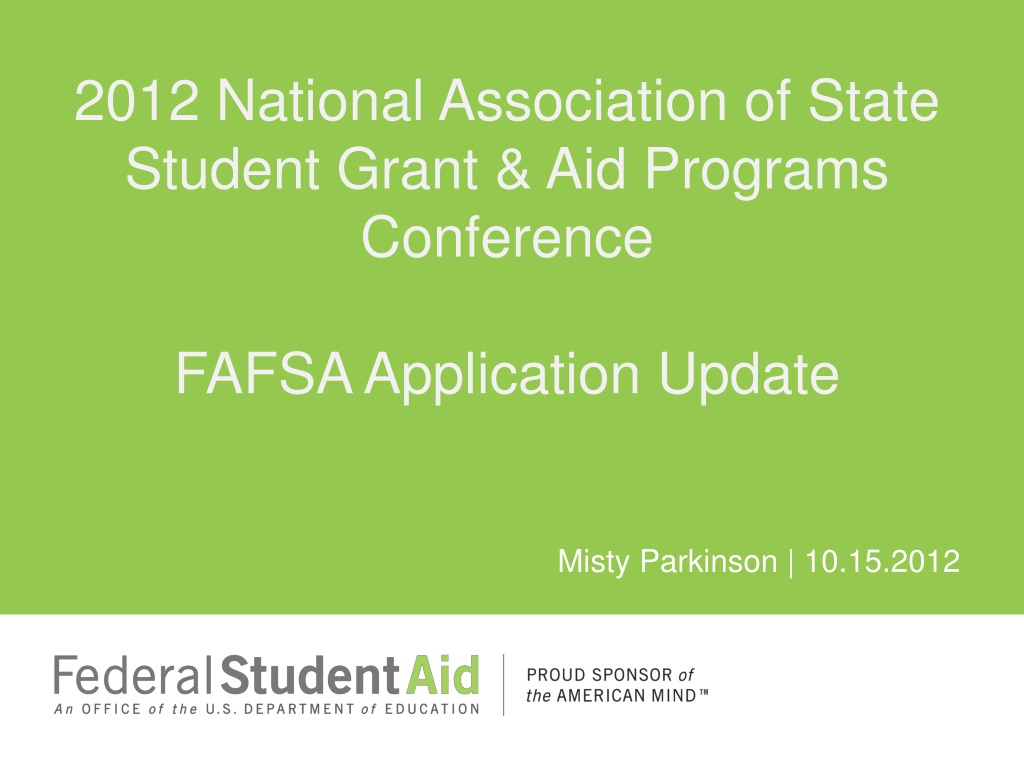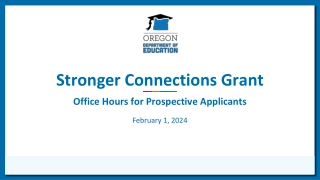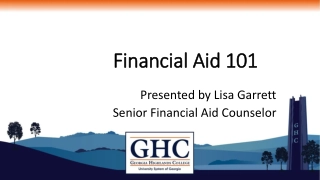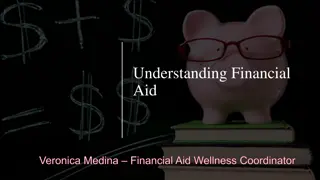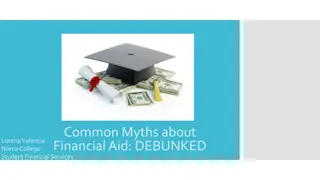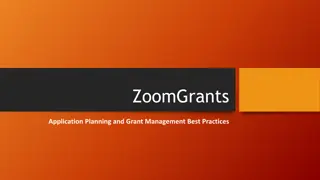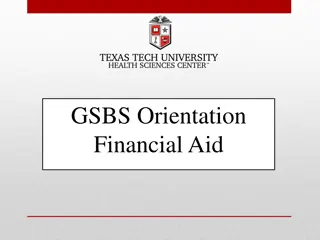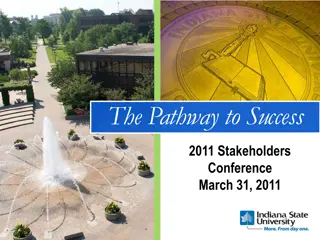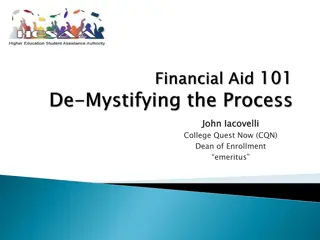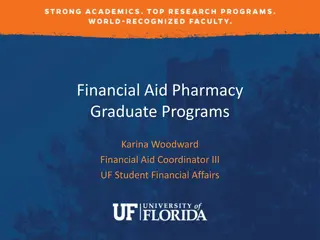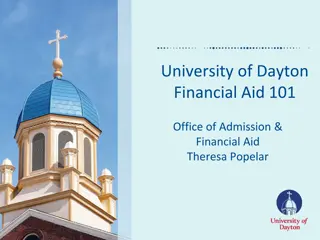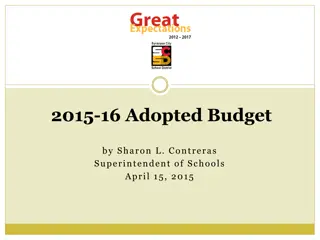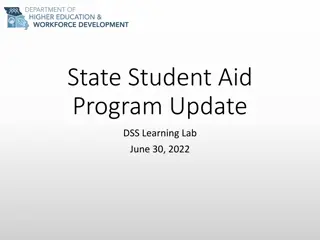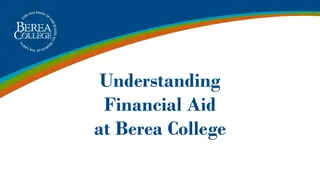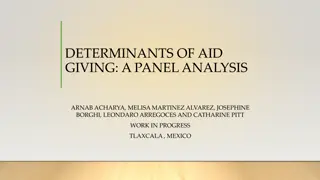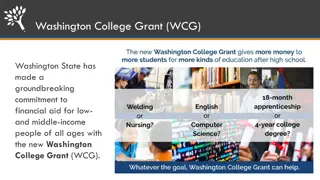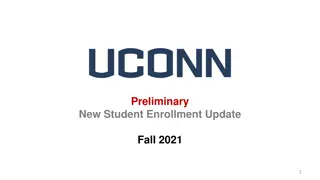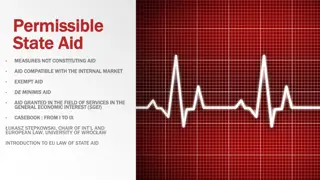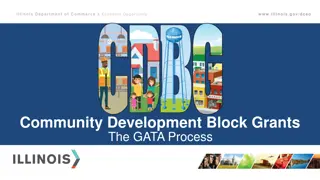Analysis of 2012-2013 State Student Grant & Aid Programs Conference
The 2012-2013 State Student Grant & Aid Programs Conference highlighted key updates and statistics related to FAFSA applications and program enhancements. It included details on application sources, completion times, and IRS Data Retrieval Tool statistics. The event showcased the impact on both dependent and independent student applications, with insights into user authentication volumes for the 2012-2013 cycle.
Download Presentation

Please find below an Image/Link to download the presentation.
The content on the website is provided AS IS for your information and personal use only. It may not be sold, licensed, or shared on other websites without obtaining consent from the author. Download presentation by click this link. If you encounter any issues during the download, it is possible that the publisher has removed the file from their server.
E N D
Presentation Transcript
2012 National Association of State Student Grant & Aid Programs Conference FAFSA Application Update Misty Parkinson | 10.15.2012
Agenda 2012-2013 Application Statistics 2012-2013 Mid-cycle Enhancements 2013-2014 Application Changes and Enhancements State Application Programming Interface (API) FAFSA Completion Pilot Project FAFSA Completion Tool for High Schools 2
Application Statistics The following statistics are for applications submitted January 1 - September 30 Transaction Source 2012-2013 2011-2012 Web 16,437,268 16,061,798 EZ Web 2,175,909 2,443,125 Paper 41,268 65,864 Electronic Other 97,510 183,078
Application Statistics The following statistics are for dependent student applications from January 1, 2012 - September 30, 2012 Application Type (English) Number of applicants Average Completion Time (in minutes) Application Type (Spanish) Number of applicants Average Completion Time (in minutes) FAFSA 3,455,616 37:04 FAFSA 28,833 34:56 EZ FAFSA 329,120 32:02 EZ FAFSA 7,003 38:29 Renewal 4,003,109 27:13 Renewal 41,871 21:02 EZ Renewal 394,268 19:52 EZ Renewal 11,849 23:48
Application Statistics The following statistics are for independent student applications from January 1, 2012 - September 30, 2012 Application Type (English) Number of applicants Average Completion Time (in minutes) Application Type (Spanish) Number of applicants Average Completion Time (in minutes) FAFSA 3,879,269 19:03 FAFSA 25,841 21:51 EZ FAFSA 594,765 16:31 EZ FAFSA 5,237 24:02 Renewal 4,894,169 14:36 Renewal 40,462 12:56 EZ Renewal 774,079 10:60 EZ Renewal 7,016 15:60
IRS Data Retrieval Tool (IRS DRT) Statistics As of July 15th, the volume of successful authentications with the IRS for the 2012-2013 cycle surpassed the entire volume of successful authentications for 2011-2012 As of September 23rd (when 2011-2012 correction processing ended and the IRS DRT was no longer available for that year), 5,198,417 unique users had successfully authenticated for 2011-2012 As of September 30th, 7,160,227 unique users have successfully authenticated for 2012-2013 For 2013-2014, the IRS DRT is scheduled to become available on February 3rd
Mid-cycle Enhancements Case sensitivity for PIN challenge response was removed Automatic e-mailing of confirmation page began Applicants now receive an alert when e-mail address not entered Browse Help and Contact Us pages were merged
Mid-cycle Enhancements The Home Page now reflects the new look and feel for Federal Student Aid Based on customer feedback the options on the Home Page now reflect how applicants should access the FAFSA based on their filing status
2013-2014 Application Changes and Enhancements
Integration of StudentAid.gov and YouTube URLs for discontinued Web sites will be replaced with references to StudentAid.gov Users will be able to link to Federal Student Aid s YouTube videos from FAFSA on the Web home page
Enhanced Browser Detection Browsers that were tested and determined to be incompatible with FAFSA on the Web will continue to be blocked All other browsers, current & new, will be supported and the unsupported browser message will no longer display
New Messaging for Estimators Instructional text will display for applicants who indicate they Will file their taxes
Enhanced IRS DRT Questions The format of the IRS Data Retrieval Tool filtering question will be enhanced Question labels will be improved for clarity
Enhanced Sign & Submit Page Modify preparer question to include link to help topic Make PIN signature option most prominent Sign with PIN will be the default signature option for most applicants Users can choose another option for signing, and when selected, the system will display options to use PIN, print a signature page, or submit without signatures, along with definitions for each
Improved Confirmation Page New text informs applicants that eligibility for federal aid is dependent on meeting eligibility guidelines What Happens Next? section enhanced and relocated Applicants will now have option to share on Facebook or Twitter that they completed their FAFSA
Additional Application Updates Any references to the terminology Food Stamps will be changed to Supplemental Nutrition Assistance Program (SNAP) All students with a high school diploma will be required to provide the high school s name, city and state Automatic Zero EFC threshold will change from $23,000 to $24,000
State Application Programming Interface (API)
State API The State API provides students with the option to transfer the information provided in their FAFSA directly into their state application In order to participate a state agency must have a web-based version of the state application that applicants are required to complete in order to determine eligibility for state-based student aid The state agency must also develop the capability to electronically interface with FAFSA on the Web
State API States that currently participate: California Iowa Mississippi New Jersey New York Pennsylvania Vermont New for 2013-2014: Minnesota
State API States that are interested in participating for 2014-2015 must attend a briefing session which will be scheduled for spring 2013 To find out more information about the State API please refer to the Electronic Announcement posted to IFAP on April 23, 2012 Subject: Invitation to States for Participation in Application Programming Interface with FAFSA on the Web Contact Andrea Bell (Andrea.Bell@ed.gov) or Valerie Lefor (Valerie.Lefor@ed.gov) for additional information
FAFSA Completion Pilot Project In 2010, the U.S. Department of Education implemented a FAFSA Completion Project designed to assist local educational agencies (LEAs) and secondary school administrators in determining which of their students have completed a FAFSA for the upcoming school year FAFSA completion information provided under the FAFSA Completion Project can help LEAs and secondary schools in implementing targeted outreach efforts to assist their high school seniors and their families who have not yet submitted a FAFSA, or who submitted a FAFSA that may be incomplete
FAFSA Completion Pilot Project 92 new school districts, spanning 30 states, were recently selected for the FAFSA High School Completion Project. These 92 sites join the initial cohort that received data for the 2011-2012 school year as part of the FAFSA Completion Project s initial pilot The school districts will be able to track whether high school seniors have completed the FAFSA starting in the 2012-2013 school year This information will help school guidance counselors focus efforts and resources on students who have not yet completed a FAFSA
FAFSA Completion Tool for High Schools
FAFSA Completion Tool for High Schools Historically, high schools relied on self-reported surveys to estimate their FAFSA completion rates. These completion rates typically exceeded actual rates by 25-50% Federal Student Aid is providing high schools with current data about their FAFSA submissions and completions so that high schools can track their progress and help to ensure that their students complete a FAFSA
FAFSA Completion Tool for High Schools The data available reflects the number of submitted and completed FAFSAs among applicants no older than 18 who will have received their high school diploma by the start of the 2012-2013 school year The data is displayed in spreadsheets broken down by state or territory that include the school name and city of the high school Additional information can be found at http://studentaid.ed.gov/about/data-center/student/application-volume/fafsa- completion-high-school
